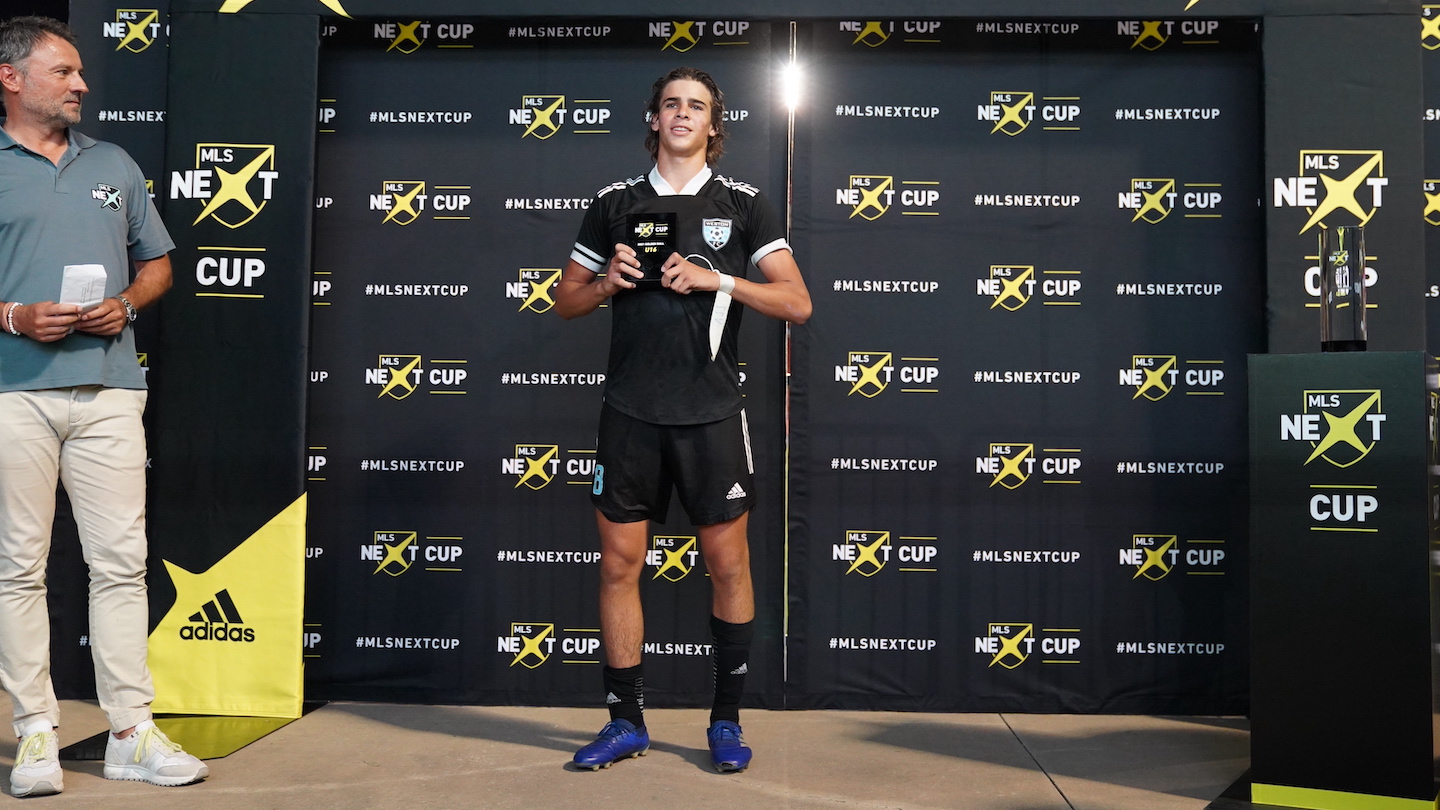(Pictured Above: Benjamin Cremaschi with Weston FC at the MLS NEXT Cup in 2021. / Photo Credit: MLS NEXT)
With today’s official announcement from MLS on the creation of their Development Grant program, the economics of American youth soccer have changed.
Although MLS’ Development Grant program isn’t the cure-all for American youth soccer or the pay-to-play model, it is certainly a step in the right direction. According to the league, each player that is eligible for the Development Grand Fund can earn up to $30,000 for their MLS NEXT Elite Academy team along with a percentage of a transfer fee if the player is eventually transferred from an MLS club to a non-MLS club outside of the United States and Canada.
Clubs may not be limited as to how they can choose to use their Development Grant Funds, the league has encouraged teams to utilize any funds received towards providing low or no cost fee options for players and families. Many youth soccer clubs are 501c3 non-profit organizations and already currently have scholarship or financial aid programs to help offset youth soccer registration fee and travel costs. It should also be noted at this point that MLS NEXT teams that are affiliated with a senior MLS club do not charge player registration fees. However, most if not all Elite Academies do.
To understand why this announcement is important, it is important to take a step back and understand how the economics of player transfers work. Current FIFA transfer regulations, require for training and solidarity compensation to be paid to clubs when a player transfers as a professional to a club of another nation between the ages of 12 and 23. These payments are made to help give back to the game at the grassroots level, to help clubs cover fees and operational costs. The one country that has famously shirked this system is the United States.
It has been a point of contention for youth clubs over the years particularly with the success that MLS teams have had in signing players to Homegrown Player contracts and then collecting large transfer values from European clubs. Multiple court cases have also been brought to FIFA regarding the matter, most famously in 2019 when CrossFire Premier filed a grievance to FIFA against the Seattle Sounders, Major League Soccer, US Soccer, and Tottenham Hotspur after the Sounders sold DeAndre Yedlin to the London-based team.
A variety of reasons have been given through the years as to why US Soccer has stayed away from collecting training and solidarity payments. It was largely assumed that pay to play would prevent youth clubs from collecting compensation. The general thought process was that because parents had to pay a yearly registration fee that the clubs had already been compensated for training and development. But in the 2019 Yedlin ruling, FIFA dismissed that notion though they didn’t rule in CrossFire’s favor either.
While FIFA may have kicked out the ‘pay to play’ argument, US Soccer has never really moved on the issue. Meanwhile, Major League Soccer teams through their own academy programs and the Homegrown Player rule could start reaping the benefits of their youth academy programs. This issue has driven a huge wedge between MLS and youth clubs across the country, who are increasingly seeing rising costs in field rental fees, uniform kit prices, and other operational costs and thus having to raise their fees.
For MLS, the Development Grant Fund makes sense on multiple fronts. First, it incentivizes club to want join MLS NEXT and become an Elite Academy. Though the chances of a youth player playing professional soccer are still low, if it does happen grant funds could significantly help their club both in the short and long term. That youth soccer clubs can finally receive some form of compensation for developing high level players is an immediate win for the league. High level clubs that have been courted by MLS in the past to join NEXT and have had multiple players go on to play professionally may find this deal too sweet to pass up.
Second, it is an olive branch to the youth soccer world, recognition from the league that there is work being done beyond their 30 teams that requires some level of credit. The relationship between MLS academies and youth clubs that are either part of the Elite Academy structure or no affiliation at all hasn’t always been the best. That the league has also included eight players to retroactively receive Development Grant fund awards for their youth clubs is more than a tip of the cap.
| Retroactive MLS NEXT Development Grant Recipients | ||
| Player | MLS Club |
MLS NEXT Elite Academy
|
| Adam Beaudry | Colorado Rapids | Real Colorado |
| Julio Benitez | Real Salt Lake | RSL Arizona |
| Chance Cowell | San Jose Earthquakes |
Sacramento Republic FC
|
| Benjamin Cremaschi | Inter Miami CF | Weston FC |
| Kristian Fletcher | D.C. United | Bethesda SC |
| Caden Glover | St. Louis CITY SC |
St. Louis Scott Gallagher
|
| Peyton Miller | New England Revolution |
Oakwood Soccer Club
|
| Tyson Pearce | St. Louis CITY SC |
St. Louis Scott Gallagher
|
| Brooklyn Raines | Houston Dynamo FC |
Barca Residency Academy
|
| Santiago Suarez | New England Revolution |
Sacramento Republic FC
|
There are implications outside of MLS that also should be considered. Although the NWSL lacks the direct pathway that MLS provides players in going from youth teams to the professional level, that players are signing high dollar contracts and their youth teams are not being compensated will certainly be brought up. The same can also be said of players in the Boys ECNL, whose clubs may be a part of a pipeline or pathway with an MLS academy but are not receiving a Development Grant. In most countries, the football governing body has weighed in on topics like this. But since the demise of the Development Academy, US Soccer has largely stayed quiet on youth soccer issues opting for the ‘letting things play out’ philosophy.
Whatever the outcome may be, the Development Grant announcement is a watershed moment for American youth soccer. Although the door isn’t completely open for any club to receive compensation and pay to play is still alive, it opens the door to new possibilities within the game and that perhaps we are actually growing a soccer nation.








